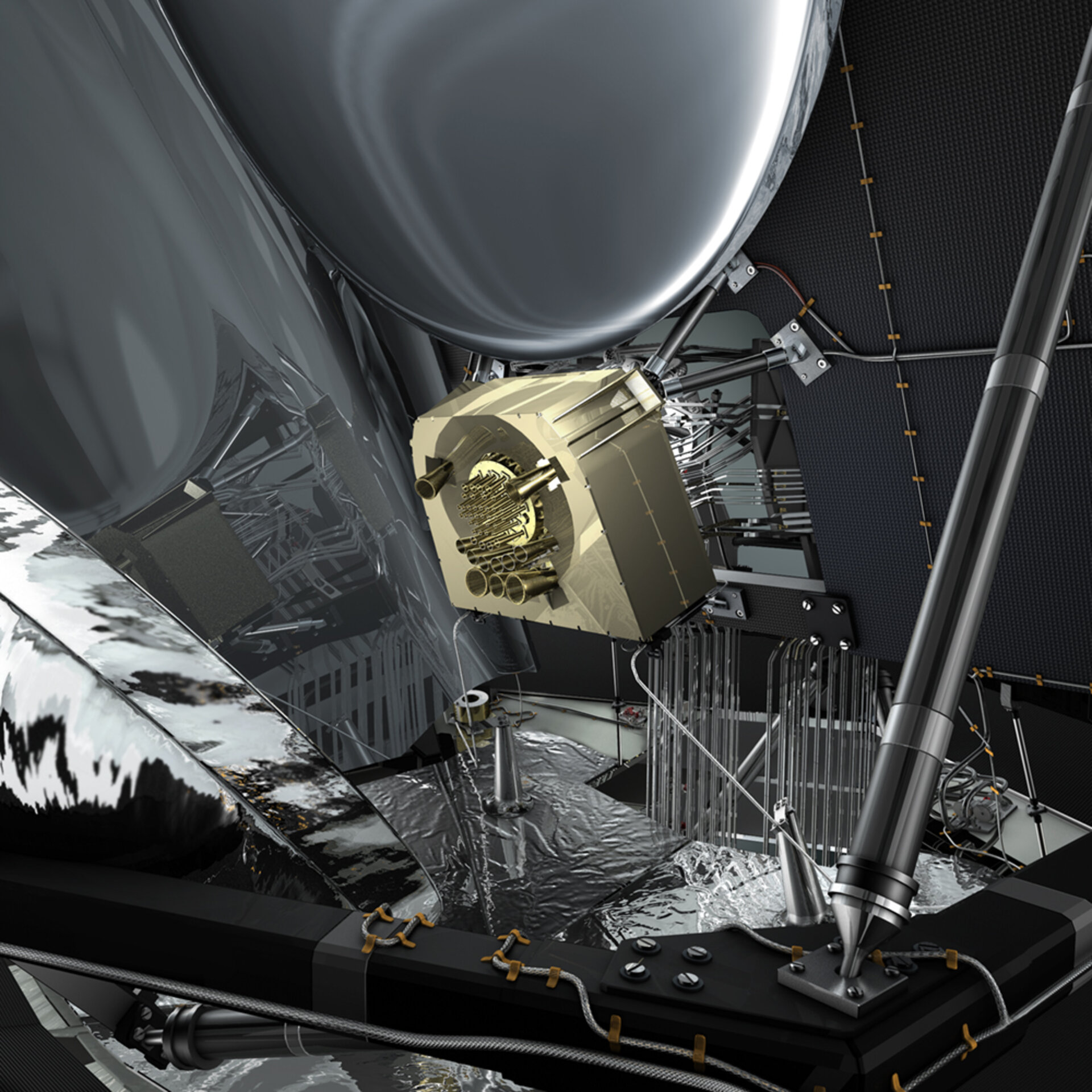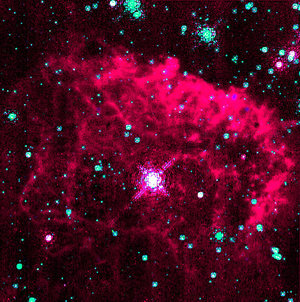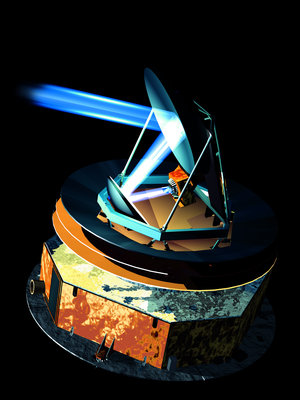Instruments
Planck carried two scientific instruments: the High Frequency Instrument, or HFI, and the Low Frequency Instrument, or LFI. Their detectors converted the microwave and radio light gathered by the telescope into very accurate maps of the microwave sky. This data is used to extract the most accurate estimates of the spatial variations of the temperature of the Cosmic Microwave Background (CMB) radiation, a key to understanding the origin of the Universe and the evolution of galaxies.
The Planck instrument detectors featured the highest sensitivity and angular resolution ever for a space observatory at these wavelengths. The angular resolution indicates the smallest separation between regions in the sky that the detectors are able to distinguish; the smaller the separation, the sharper (better) the information gathered on the temperature of the cosmic background. The angular resolution can be compared to the ability to distinguish fine details, the 'sharpness' of vision.
The detectors were so sensitive that they could measure temperature variations in the sky of millionths of a degree – a task similar to measuring from Earth the heat produced by a rabbit sitting on the Moon. In order to achieve this, some of Planck's detectors were cooled to about one-tenth of a degree above absolute zero (-273.15 °C), so that their own heat did not swamp the signal from the sky.
The Low Frequency Instrument (LFI)

LFI was designed to produce high-sensitivity, multi-frequency measurements of the microwave sky in the frequency range of 27 to 77 GHz (wavelength range 11.1 to 3.9 mm). The instrument consisted of an array of 22 tuned radio receivers located in the focal plane of the telescope. These radio receivers gathered microwaves from the sky and converted them to a measure of the intensity of radiation at each frequency.
Principal Investigator: Nazzareno Mandolesi, Istituto di Astrofisica Spaziale e Fisica Cosmica, Bologna Italy.
The High Frequency Instrument (HFI)
HFI was designed to produce high-sensitivity, multi-frequency measurements of the diffuse radiation permeating the sky in all directions in the frequency range of 84 GHz to 1 THz (wavelength range 3.6 to 0.3 mm). The instrument consisted of an array of 52 bolometric detectors placed in the focal plane of the telescope. Bolometric detectors are devices capable of detecting and measuring small amounts of thermal radiation.
The instruments were complementary and they worked together to produce the overall mission results.
Principal Investigators (PI): Jean-Loup Puget (PI), Institut d’Astrophysique Spatiale in Orsay, France,
François Bouchet (co-PI), Institut d’Astrophysique de Paris, France.















 Germany
Germany
 Austria
Austria
 Belgium
Belgium
 Denmark
Denmark
 Spain
Spain
 Estonia
Estonia
 Finland
Finland
 France
France
 Greece
Greece
 Hungary
Hungary
 Ireland
Ireland
 Italy
Italy
 Luxembourg
Luxembourg
 Norway
Norway
 The Netherlands
The Netherlands
 Poland
Poland
 Portugal
Portugal
 Czechia
Czechia
 Romania
Romania
 United Kingdom
United Kingdom
 Slovenia
Slovenia
 Sweden
Sweden
 Switzerland
Switzerland

































